The camping season is fast approaching! Now is the perfect time to consider how to minimize our impact while exploring the backcountry.
Sadly, backcountry campers are getting a failing grade when it comes to following sustainable practices. A recent study by the University of Alberta found that while backcountry campers know about low-impact camping practices, frontcountry campers are actually better at following them.1
We can do better! This guide will help you understand how backcountry camping affects the environment so that you can make meaningful changes to minimize your impact. Along the way, you’ll learn a little about ecosystem function and wildlife.
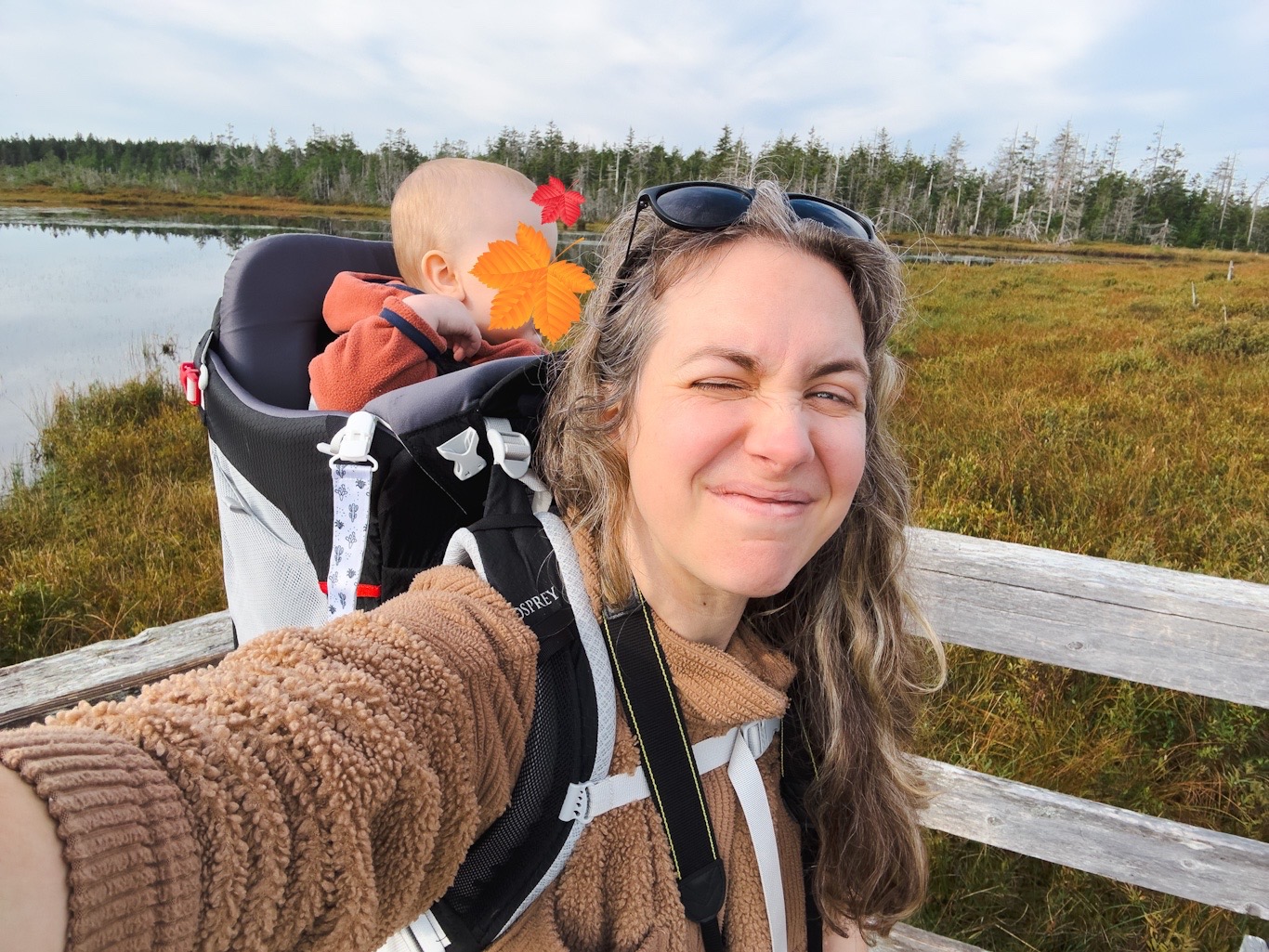
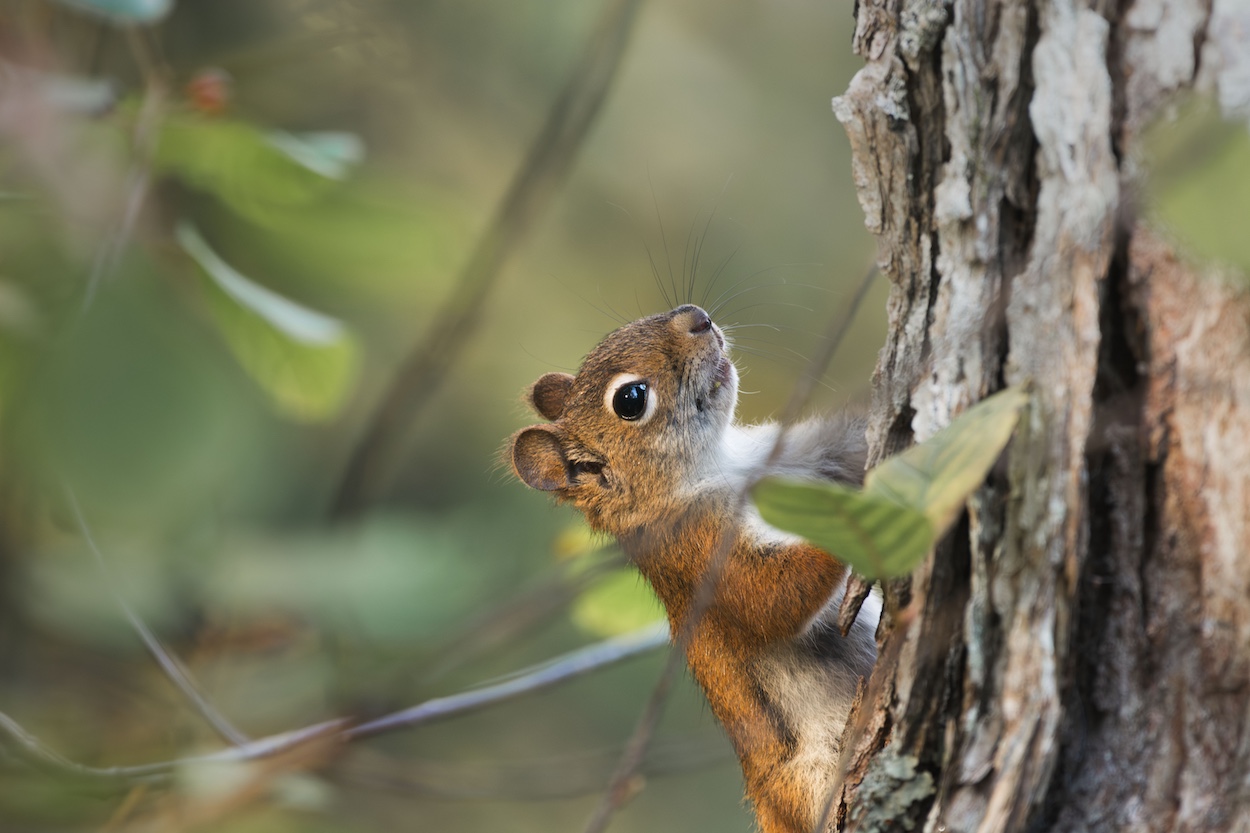

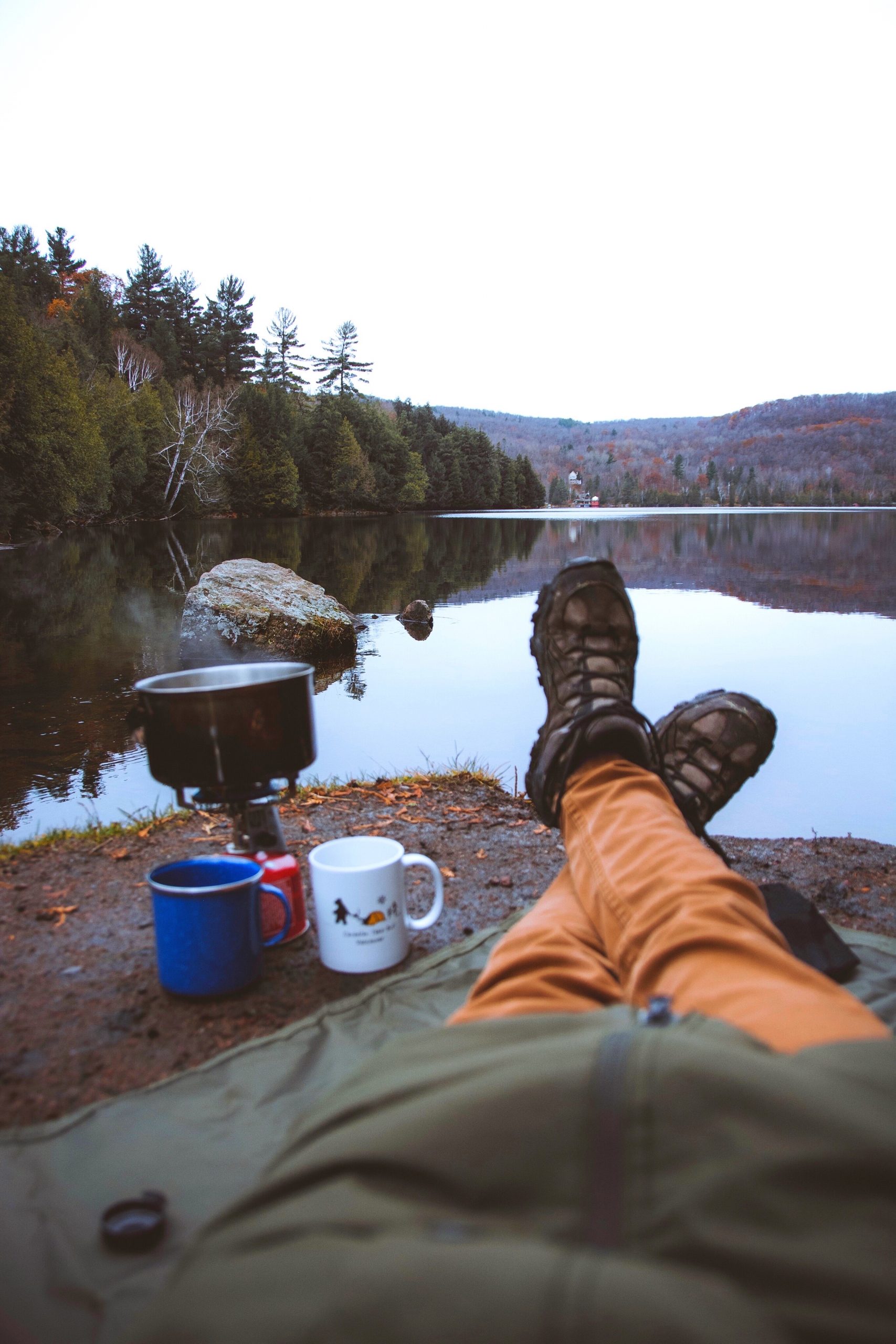
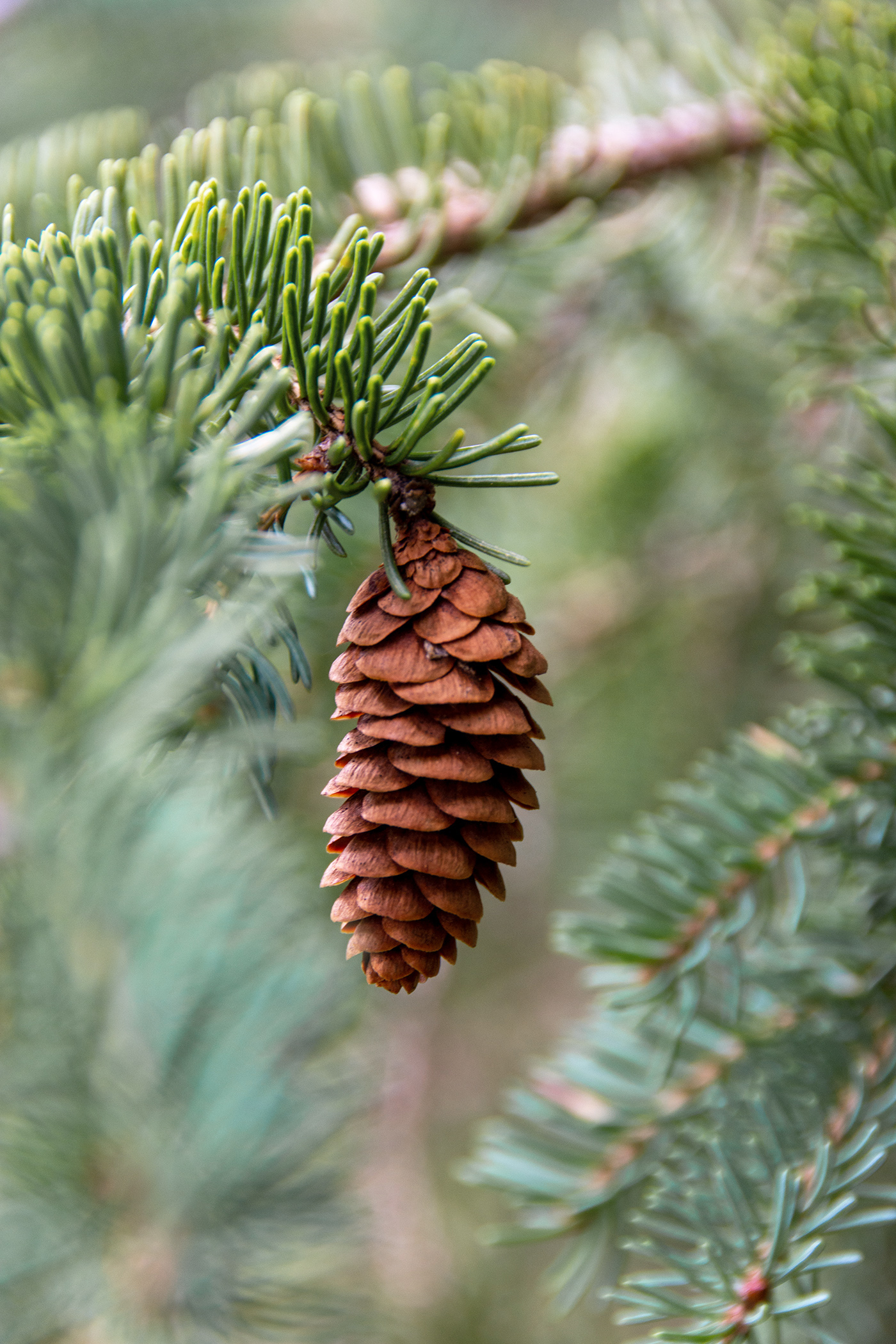
The Problem
Outdoor lovers know that visiting public lands brings great joy and well being. For lots of us, it’s how we fell in love with the outdoors and part of the reason we want to protect it. But, outdoor recreation has a big impact on our environment. While it doesn’t compare to the destruction of polluting industries or urban sprawl, it still has an effect.
When it comes to recreation, hiking is the second most common threat to species at risk in Canada.2 Common problems that arise from hiking are soil compaction, trampled vegetation, siltation, wildlife disruptions, and changes to water chemistry.2 When one part of the ecosystem is affected, it can have ripple effects on many other parts.3 Camping exasperates all these issues.
While park managers try to reduce the effects of backcountry hiking and camping with sound planning, their jobs are becoming harder with the growing popularity of outdoor recreation. In the end, there is no way to prevent harm, the best we can do is minimize our impact.
A little education can go a long way to prevent problems.4 Many issues happen when people are uninformed or lack the skills needed to be in the backcountry (e.g. tying a bear bag is hard!).4 Sometimes, people know what should be done, but still lack knowledge about why certain actions harm the environment, making them less likely to follow guidelines. This post tackles the how and why of low-impact camping. Let’s get into it!
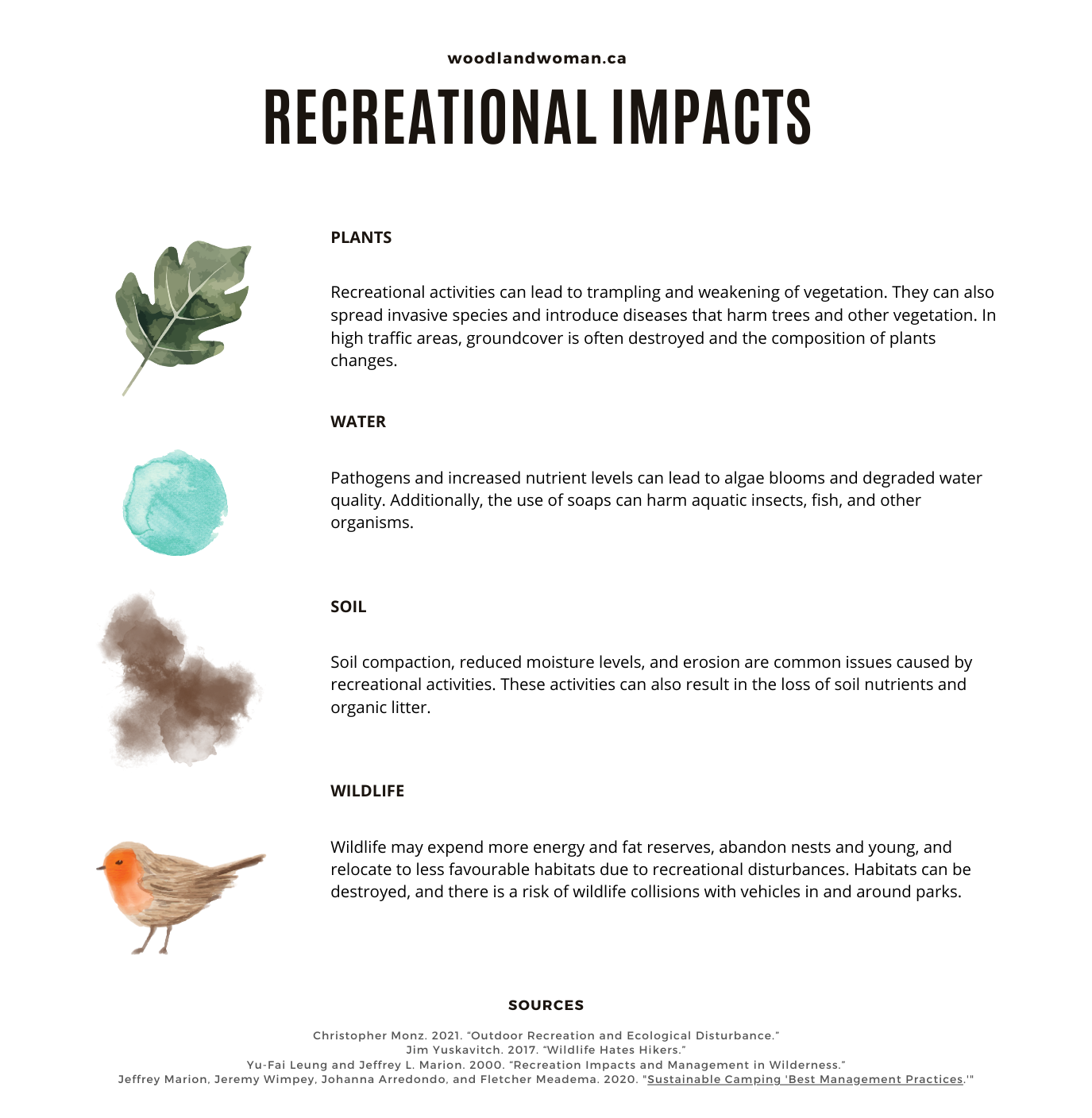
Stick to the Trail
Problem: Building and using trails greatly affects soil and vegetation, leading to issues like soil compaction, erosion, muddiness, loss of groundcover, and changes in species composition.3 The more use trails get, the larger the impact – especially during wet seasons. It starts with plants getting trampled and worn down, then the exposed soil begins to erode.4 Over time, shrubs disappear and plant composition changes, often leading to invasive species taking over.4
Solution: Stick to the trail. Trails are designed to direct foot traffic in a way that minimizes impact, allowing plants to thrive undisturbed. During the rainy season, wear appropriate footwear to avoid widening trails by sidestepping mud and puddles.
Clean Your Gear
Problem: Invasive plant species are a major problem facing our parks. Clothing and shoes can carry seeds that are later deposited on trails and campsites.4 Once established, invasives often outcompete native plants, causing their decline and threatening the plant species that wildlife depend on. Invasive species can also change soil composition and nutrient cycling, leading to further impacts on ecosystem function.5
Solution: By cleaning your boots, clothing, and gear, you can help prevent the spread of invasive seeds.4 It’s also a good idea to keep invasives out of your home garden.
Respect Wildlife
Problem: Wildlife try their best to avoid people. When we enter into their territories, we can cause changes in their behaviour, leading them to use more energy and fat reserves.4 Some animals may even leave their nests and young, moving to less favourable habitats with fewer resources or more predators.6 In winter, having enough fat can decide if an animal survives and reproduces, so extra care is needed not to cause alarm.6 Another major issue wildlife face near or within public lands is collisions with vehicles.4
Solution: Observe animals from a distance. Avoid making excessive noise, littering, and contaminating waterways. Slow down when driving through parks.
Avoid Feeding Wildlife
Problem: Feeding wildlife can lead to unhealthy dependencies on human food. This is common with birds, mice, rats, squirrels, skunks, raccoons, foxes, and bears.3 Feeding can make small animal populations grow quickly, but then crash suddenly after the camping season.3 Bears that find food at campsites can be dangerous and often need to be relocated or put down. “A fed bear is a dead bear,” as the saying goes.
Solution: Do not feed animals and follow guidelines for food storage. Your kitchen/eating area and food storage area should be 200 feet from each other and your tent. Some parks provide metal food lockers or pulley-systems to keep food away from animals. If these aren’t available, use bear-resistant containers to store food, trash, and scented items (ie. sunscreen, deodorant, and toothpaste). Otherwise, hang food and scented items 10-15 feet high and 4-6 feet from the trunk of a tree.
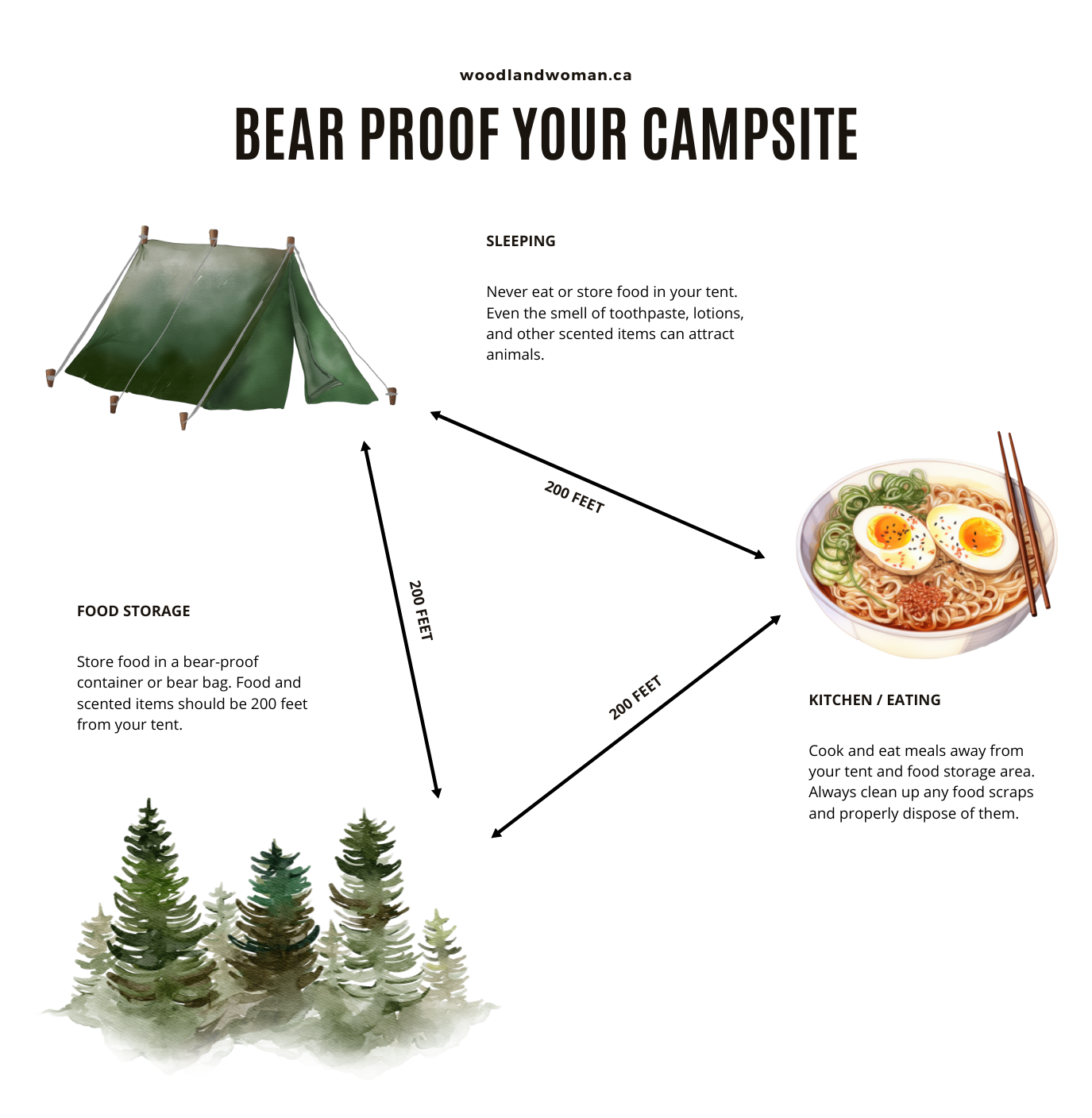
Protect Waterways
Problem: Soaps, even biodegradable kinds, contaminate waterways harming insects, fish, and other organisms. Even small amounts create damage by breaking the surface tension of water. Lower surface tension means more harmful chemicals, like pesticides, are absorbed by fish. Soap can also destroy the mucus layers that protect fish, and cause algae blooms.
Solution: Do not wash dishes or bathe in lakes and rivers. After washing dishes, strain grey water for leftover food waste. Pack out the food waste and dig a cathole 200 feet from your campsite and waterways to dispose of grey water. You can also broadcast the water, dispersing it over a wide area. I have an entire post about washing dishes in the backcountry with more details.
Source Local Firewood
Problem: Invasive species and diseases are carried by infected firewood. One infected log can lead to the destruction of thousands of trees which then endangers parks and surrounding ecosystems.
Solution: Buy local, burn local. Firewood should be sourced within 80 kilometres of where it will be burned. Many parks provide firewood at backcountry sites or outright ban fires.
Practice Fire Safety
Problem: Every year, thousands of wildfires are started by humans. Wildfires impact air quality, destroy communities, and wipe out wildlife habitat. They also emit large amounts of carbon dioxide and other pollutants, contributing to air pollution and climate change. Heat from fires can alter soil structure, reducing its ability to hold water and nutrients.7 It can also affect a soil’s pH levels.7
Solution: Opt for a camp stove. If you do have a fire, use a designated fire pit and keep it small. If fires are permitted and there is no designated pit, use a non-flammable surface (sand, gravel, rock) or fire pan. Note that many parks prohibit the gathering of live or dead wood. If you are allowed to gather wood, use dead and downed wood that can be broken by hand.8 Remove large undesignated fire sites and leave a smaller one that’s about two feet wide.8 Never leave a fire unattended.
To properly put out a fire, stop feeding it and add water several hours before breaking camp. Continue applying water until the ground stops steaming and is cool enough to poke your fingers into. It’s good practice to soak coals in a container of water until they are cool, then return them to the fire pit. Only leave the campsite when you’re sure the fire is totally out.
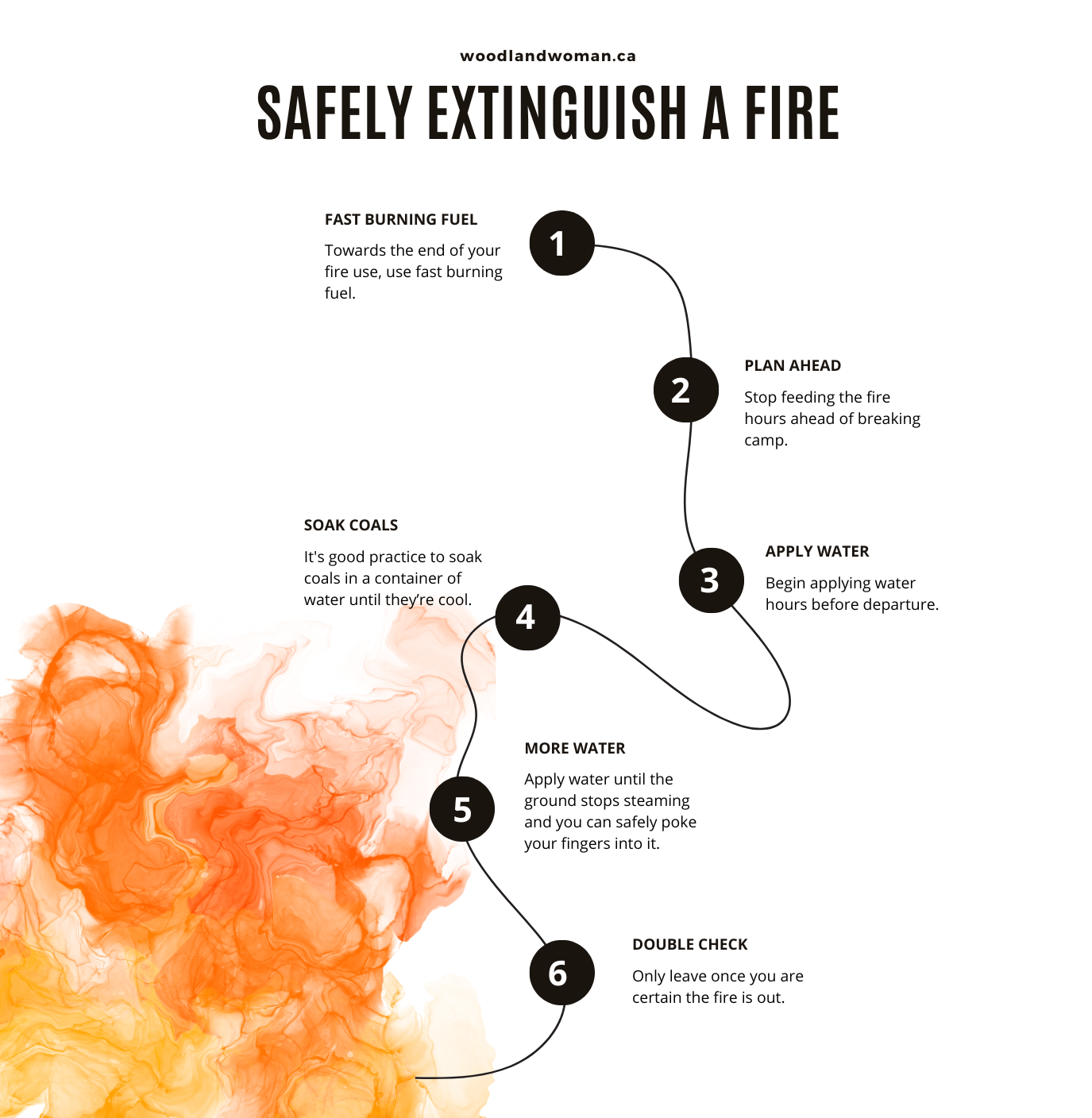
Know How to Dispose of Waste
Problem: Improper disposal of human waste can lead to soil and water contamination. Rain and melting snow can wash feces into streams, rivers, and lakes, polluting the water and posing a health risk to wildlife and humans.
Solution: Properly dispose of human waste by burying it in a cathole at least 200 feet away from water sources, trails, and campsites. Some areas require you to pack it out. Use sealable plastic bags. If all this makes you queasy, choose backcountry sites with pit toilets.
Enjoy the Local Scene
Problem: One major source of pollution happens before we reach the backcountry: the burning of fossil fuels. As we know, cars release carbon dioxide, other greenhouse gases, and pollutants into the atmosphere.
Solution: Reduce your carbon footprint by staying local. Choose nearby destinations to reduce the need for long drives or flights. When camping locally, consider using public transportation, carpooling, or biking to reduce emissions. Travelling shorter distances also gets you more time outside and less time in transit.
Avoid Hotspots
Problem: Popular tourist destinations struggle with overcrowding which exasperates all the issues discussed in this post. Social media has worsened the problem as people flock to “Instagrammable” locations.
Solution: Explore lesser-known destinations, or visit hotspots in the off-season to reduce overcrowding. Remember, social media shows curated content, and there are plenty of beautiful, lesser-known places to explore.
Keep Dogs Leashed
Problem: Unleashed dogs can chase, harass, or harm wildlife. They can also trample vegetation, dig up soil, and disturb sensitive habitats, like nesting sites. Dogs that are allowed to roam freely may poop in or near water sources, leading to contamination. Finally, dogs can attract wildlife to campsites, increasing the risk of conflicts between humans and animals.
Solution: Keep your dog leashed. Make a tether for them at campsites. Properly dispose of their waste in a cathole or pack it out.
Camp on Designated Spots
Problem: Public land managers construct camping sites to minimize environmental impact. When visitors expand on sites or create their own, they destroy the soil and plants that live there.
Solution: Camp on designated spots and match your group size to the campsite size. If your group is large, split it up between two or more sites.8 This will help protect fragile ecosystems and wildlife habitat.
Low-Impact Camping: Final Suggestions
While we can’t alleviate all the pressures that hiking and camping create, we can meaningfully reduce our environmental footprint by following these recommendations. If you want to further help protect public lands, consider volunteering with a local conservation group, community cleanup, or restoration project. They’re great ways to get involved and help protect our natural spaces. You’ll also meet lots of likeminded people in your community!
Other Posts You May Enjoy
My Parks Canada oTENTik Experience
Separating Fact from Fiction: Debunking Popular Outdoor Myths
The Ultimate Fall Camping Guide
Sources
1 Clara-Jane Blye and Elizabeth Halpenny. 2020. “Do Canadians Leave No Trace? Understanding Leave No Trace Attitudes of Frontcountry and Backcountry Overnight Visitors to Canadian Provincial Parks.” Journal of Outdoor Recreation and Tourism.
2 Julie Rosenthal et. al. 2022. “The Impact of Recreational Activities on Species at Risk in Canada.” Journal of Outdoor Recreation and Tourism.
3 Yu-Fai Leung and Jeffrey Marion. 2000. “Recreation Impacts and Management in Wilderness: A State-of-Knowledge Review.” USDA Forest Service.
4 Christopher Monz. 2021. “Outdoor Recreation and Ecological Disturbance.” Recreation Ecology Lab.
5 Jeffrey Weidenhamer and Ragan Callaway. 2010. “Direct and Indirect Effects of Invasive Plants on Soil Chemistry and Ecosystem Function.”
6 Jim Yuskavitch. 2017. “Wildlife Hates Hikers.” Sierra.
7 “Fire Effect on Soil.” Northern Arizona University.
8 Jeffrey Marion, Jeremy Wimpey, Johanna Arredondo, and Fletcher Meadema. 2020. “Sustainable Camping ‘Best Management Practices.'”
Excellent article, I learned some new information to consider while planning my next hikes! I try to bring my kids as often as possible to teach them to enjoy and respect nature as we are just guests here. We will be attempting some camping trips in the near future, as well, so there will be even more opportunity for us to be mindful in nature. Thank you!
I’m glad it was helpful. It’s so important and rewarding to get kids outside. Wishing you all the best in your upcoming camping trips 🙂